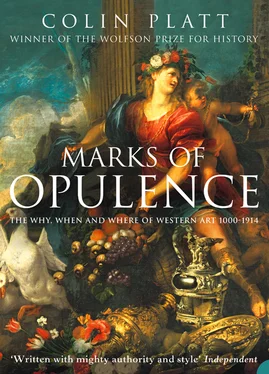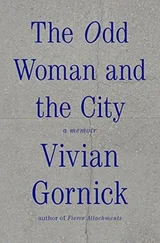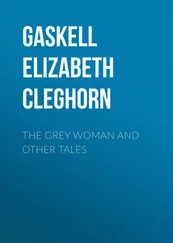1 ...7 8 9 11 12 13 ...22 According to Aristotle, Ethics 4, it is the part of the magnificent man to go to great expense and to make donations, and especially in connection with God and the building of temples. Thus our lord King Charles acted as befits a magnificent man and went to great expense and made gifts to knights, counts, and the like … How great were the gifts he made to clerics and religious! Indeed, too, how many were the churches and monasteries, how many were the convents that he built and endowed! 12
Magnificence was as desirable in the government of cities also, for as the Florentine patrician, Pagolantonio Soderini, would later explain to his fellow disputants in Francesco Guicciardini’s political Dialogue of the 1520s: ‘Although cities were founded principally to protect those who took refuge in them and to provide them with the commodities of everyday life, nevertheless their rulers are also responsible for making them magnificent and illustrious, so their inhabitants can acquire reputation and fame among other nations for being generous, intelligent, virtuous and prudent.’ 13 But public works, in the last resort, are usually funded by private wealth. And probably the most significant contribution the friars ever made to the self-esteem of Europe’s cities was to give wealth-creation recognition in the Church. It was to Aristotle again, only recently become accessible in translations of their own making, that Mendicant scholars turned for a less condemnatory view of personal profit – deemed, until then, to be no better than exploitation – which began with the defence of private property. Aristotle, in his own day, had seen nothing wrong with private property. And for the Aristotelian Dominican, Thomas Aquinas, not only was personal wealth no sin, but the rich stood a better chance of being virtuous: thus ‘exterior riches are necessary for the good of virtue, since through them we sustain ourselves and can help others’. 14 Contemporaneously, it was the Franciscan master Guibert of Tournai, teaching alongside Aquinas (the ‘Angelic Doctor’) in the Paris schools, who assured the class of merchants that ‘gold and silver make neither good men nor bad men: the use of them is good, and the abuse of them is bad’: in effect, that there is nothing sinful in buying and selling provided always that the motives are not base. 15 And while some of the friars’ other rationalizations of money-making – of interest (‘usury’) as an acceptable charge for venture capital, and of a fair (or ‘just’) price as being whatever the market would bear – were more problematic, they were nevertheless entirely successful in promoting Christ the Good Merchant ( Bonus Negotiator ) as a commerce-friendly figure, on a level with Christ the Lawyer ( Advocatus ) or Christ the Lord ( Dominus ).
Taking the sin out of commerce was never more necessary than in this century of growth, when profits were accumulating all the time. And what made that growth significant – for the arts as for all else – was that a substantial proportion of it was real. The poor have few protectors. And when Pisa first expanded from its original walled core of just 30 hectares to the 114 hectares of 1162, and then again to the 185 defended hectares of 1300, it was less to enclose the shantytowns of migrant workers than to shelter the spreading suburbs of the rich. 16 Florence, over the same period, grew by almost eight times: from 80 to 620 hectares. And while Genoa, the wealthiest of the Lombard cities, always stayed much more compact, the huge increase in trading volumes which the Genoese experienced through the thirteenth century in particular – well beyond even their considerable population growth of some 230 per cent – is the clearest possible demonstration of rising affluence. 17
What Genoa and other Mediterranean cities enjoyed throughout the long thirteenth century was a consistently favourable trading balance with the commodity-starved but silver-rich nations of the North. Italian luxury goods – silks and linen, worked leather and fine woollens, armour and weapons, precious stones and spices – were all exchanged for northern silver. And although the bulk of the accumulated bullion was then passed on immediately to Naples and southern Italy, to North Africa, Asia Minor and the Near East, much also stuck to the fingers of Lombard middlemen. In direct response to that abundance, Italian interest rates fell sharply, from a typical 20 per cent at the beginning of the century to less than half that figure before its end, bringing the cost of a commercial loan in Genoa down as low as 7 per cent, in Venice to 8 per cent, in Florence to 10. And while personal loans were more expensive and usury (even as Mendicant casuistry had redefined it) was still condemned by the Church, every circumstance now favoured the entrepreneur. 18
With bills of exchange in regular use and with book money increasingly substituting for real, the first to benefit were the citizen-bankers of northern Italy. They challenged one another like young bulls. ‘The noble city called Venice’, wrote Martin da Canale, its thirteenth-century chronicler, is ‘the most beautiful and delightful in the world’; the Piazza San Marco is ‘the most beautiful square in the whole world, and on the east side is the most beautiful church in the world, the church of the lord Saint Mark’. And when, on the eve of the Black Death, Agnolo di Tura (‘called the Fat’) recorded the completion in 1346 of the great piazza, or Campo , at Siena, he was equally confident in awarding it the crown as ‘the most beautiful square, with the most beautiful and abundant fountain and the most handsome and noble houses and workshops around it of any square in Italy’. Chief among the newest and grandest of those ‘handsome and noble houses’ was Siena’s enormous Palazzo Pubblico, for which the clinching argument had been that ‘it is a matter of honour for each city that its rulers and officials should occupy beautiful and honourable buildings, both for the sake of the commune itself and because strangers often go to visit them on business; this is a matter of great importance for the prestige of the city.’ 19 And what then came to be exhibited in Siena’s heart of government – the Sala de’ Nove (Chamber of the Nine) – was Ambrogio Lorenzetti’s huge fresco cycle of The Effects of Good and Bad Government in Town and Country , among the most impressive didactic paintings ever made.
Both Ambrogio and his brother Pietro (also a major painter) are believed to have died in the Black Death. And another casualty of that catastrophe was the projected extension, finally agreed as late as 1339, of Siena’s already big thirteenth-century cathedral. A huge new nave was to have been built on the line of the existing south transept, enormously increasing the floor area. But construction had begun to falter even before the plague reached Siena in the spring of 1348, and the entire enterprise was abandoned soon afterwards. As a display of citizen hubris roused to fever pitch, Siena’s failed Nuovo Duomo would be difficult to match. Yet it has a parallel in the new cathedral proposed at Beauvais a century earlier, following the fire of 1225: ‘the tallest structure ever built in northern Europe and certainly the most ambitious cathedral project of the High Gothic era’. 20 Bishop Miles’s Beauvais Cathedral, like the Nuovo Duomo at Siena, was never finished. There was a major collapse of the upper choir in 1284, the great crossing tower (only recently completed) fell in 1573, and the long nave of the original plan was never built. But if pushing technology to its limits may sometimes end in tears, it was a luxury that the newly affluent could well afford. John de Cella, Abbot of St Albans (1195–1214), headed one of the wealthiest of the English black-monk houses. He won the praise of his monks for his rebuilding (‘in every detail faultlessly’) of their ‘new and splendid’ dormitory and ‘very beautiful’ refectory. Yet it was Abbot John also who made the grievous error of entrusting his most prestigious project, the rebuilding of the western show-front of his substantial abbey church, to Master Hugh de Goldcliff – ‘a deceitful and unreliable man, but a craftsman of great reputation’. Then
Читать дальше












